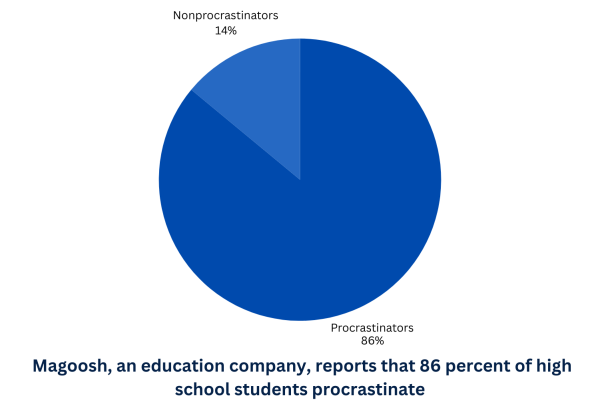The Heart of Journalism is Still Pumping
Journalism is flourishing on social media platforms but fading away in print form.
As a junior in high school, I often receive the question of what my plans are for my future and college. When I discuss my aspirations of being a journalism major, my inquirers’ hopeful wishes for success turn into an attempt to hide their nervous reactions. They bite their tongues, as they say in a higher-pitched voice, “Oh…that’s good!”
These feelings against the industry aren’t new, as many people are falling deeper into the belief that journalism is a career on the downward spiral. In fact, some of the top Google searches followed by the word “journalism” include, “Is journalism dying?”; “Why is journalism a bad career choice?”; and “Why is journalism so bad?”
In recent years, journalism has gained the reputation for being an unstable career, as people believe its significance no longer serves a purpose in our technologically advanced society. People often believe that journalism only refers to the information presented in print sources such as newspapers and magazines.
But Merriam-Webster defines journalism as “the collection and editing of news for presentation through the media.” The key word is “media.” The misbelief is that journalism only pertains to print media; the boundaries expand beyond that to include televised media and the internet, along with social media.
Technology has created an expectation for immediate answers. Human nature craves fast results. When we Google a question, we get an answer in seconds. When we text someone, we want a response right away. It is no longer acceptable in our world to wait for later. It’s now and only now. Especially when it comes to discovering news, domestic or international, everyone wants to be the first to know. When people know sooner, they feel safer.
Journalism isn’t dying…it’s evolving. News will never stop being news. Global events are incessantly occurring, demanding people to explore and learn about them in order to continue progressing our world. The up-and-coming generation has been known for their tech-savvy ways, especially with social media, and has the ability to take journalism further into a thriving direction.
Social media has created a new platform for journalism to grow and expand. Not only does it allow for news and information to be disseminated around the world almost instantly, but it also has created a unique, interactive relationship for the audience. Through likes, dislikes, comments and sharing techniques, viewers now have the ability to voice their opinion on any topic.
Striking up conversation is one of the main effects journalism can have on society, no matter the scale. Stories inform the readers, then that knowledge is spread to more readers, creating a ripple effect and decreasing those who would otherwise be blind to current events. Online media has allowed news to be presented on a much wider scale, especially with the advances in technology. According to the Pew Research Center, “in the U.S., roughly nine-in-ten adults (93 percent) get [their] news online.” Everyone is still learning from and exploring the news; they are just using more modern platforms to do so.
Social media has also become a very effective way to alert the public about the news. For me, Twitter is the main way of how I find out about different news stories by following various publications’ accounts. They not only tweet links to stories but also sometimes include a gallery of photos or simply just an updated score for a sporting event. It’s fast and concise, allowing me to feel knowledgeable on a wide range of topics in a short amount of time.
Phone apps create the quickest and shortest summary of current breaking news. News notifications have become a daily habit for some and may be the only way they receive their news now. Whether it is through news-based apps or through social media, people, especially the younger generations, can still stay relevant with what is going on, while sticking in their technological comfort zone.
Every morning after I wake up, I open Snapchat on my phone and go to their different news subscriptions. Normally I look through Daily Mail, CNN, People and The New York Times. These sources give new updates every day of national and global news, along with pop culture, in short stories and visuals so that I, and other readers, can get the main idea quickly.
I’m not alone in this finding: “as of August 2017, two-thirds (67 percent) of Americans report that they get at least some of their news on social media…according to a new survey from Pew Research Center.” Between Snapchat, Instagram, Twitter and more platforms, current events are being uploaded and live-streamed every second to ensure that the public gains an understanding of what is going on.
Online media has also broadened the ways of how news and stories can be told. Videos are now more frequently used to give full, updated reports on topics that don’t necessarily need to be in a formal story format. News and journalism as a whole have heightened to include more of a visual representation for what is being told.
While the online media industry continues to grow and thrive, the print aspect of journalism is, in fact, diminishing. The estimated total U.S. daily newspaper print circulation declined around 10 percent between the years of 2016 and 2017, as stated by the Pew Research Center.
This is what causes the false belief that the entire industry is dying when only a part of it is. Newspapers and magazines are purchased less and less as people can find the same information online — and often for free. Instead of focusing and holding onto the old ways of journalism, it is important for journalists to realize this shift in the industry and not hold back its evolution, but to instead evolve with it.
Journalism is the living, breath heart of our First Amendment rights: The freedom of speech and the freedom of press. Our founding fathers gifted us with the right to share our voices with each other without the fear of being treated differently because of it. If journalism dies, so do our opportunities to voice our thoughts.
It is just like any other thing in life: always changing and never staying the same. While parts of the journalism industry may become smaller pieces in the future, other aspects will continue to strengthen the art of media overall. Journalism is far from dying. It’s just beginning to thrive.









